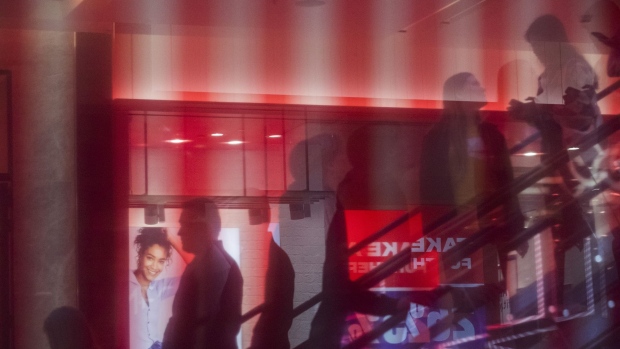Mar 27, 2023
Australian Retail Sales Decelerate as Rate Hikes Crimp Spending
, Bloomberg News

(Bloomberg) -- Australian retail sales were subdued in February, adding to evidence that household spending is beginning to slow in response to higher interest rates and suggesting the central bank may pause next week.
Sales advanced 0.2% from a month earlier, matching forecasts, Australian Bureau of Statistics data showed Tuesday. The result points to a leveling out of spending after a 1.8% surge in January and 3.9% plunge in December.
“On average, retail spending has been flat through the end of 2022 and to begin the new year,” Ben Dorber, ABS head of retail statistics, said in a statement. “Non-food industry results were mixed as consumers continue to pull back on discretionary spending in response to high cost of living pressures.”
The result is a key input for the Reserve Bank’s April meeting as the board considers the case for a pause after 10 straight hikes. Monthly inflation data due on Wednesday will be the final major report that policymakers review ahead of next week’s meeting.
The slowdown in sales suggests consumers are beginning to hunker down in the face of rising borrowing costs, bolstering the argument for the central bank to stand pat. The RBA has raised rates by 3.5 percentage points since May 2022 and resilient consumers have been a key factor in policymakers’ confidence the economy can withstand higher borrowing costs.
“For policymakers, retail spending is an important and timely measure of household activity and confidence,” said Callam Pickering, an economist at global job site Indeed Inc. “The relatively weak retail growth that we’ve observed recently suggests that cost-of-living pressures and the RBA’s response via higher interest rates is beginning to have an impact on household spending patterns.”
Economists generally expect another quarter-point increase on April 4, though money market pricing suggests the RBA will stand pat at 3.6%. The divergence reflects differing views on fallout from global bank stress that has tightened financial conditions.
Still, both the Federal Reserve and Bank of England last week pressed ahead with tightening, viewing inflation as a greater threat than financial stability risks.
RBA Governor Philip Lowe said earlier this month that the rate-setting board will look at incoming data on business surveys, the labor market, retail sales and inflation before deciding whether to pause or hike again.
The business and labor surveys this month showed that conditions remained solid in February, though a slowdown appears to be underway. Today’s report suggests a gradual easing off in household spending is now underway.
The retail figures showed spending was driven by food-related industries:
- Cafes, restaurants and takeaway food services climbed 0.5%, and food retailing rose 0.2%
- Department stores advanced 1%, followed by clothing, footwear and personal accessory retailing that increased 0.6%
- Other retailing — which includes recreational goods, cosmetic and stationary products — was the only industry to fall, down 0.4%, while household goods remained relatively unchanged
The RBA has repeatedly stressed that a key risk to Australia’s economic outlook is the response of households to higher borrowing costs, given consumption accounts for roughly 60% of gross domestic product.
Bloomberg Economics expects weakness in 2023 as the full impact of policy tightening passes through to household budgets. Escalating consumer prices and higher rates have already battered consumer sentiment while the re-emergence of overseas travel is threatening to shift more spending offshore.
The RBA itself is predicting a slowdown in spending, estimating consumption growth of 1.7% by end-2023, from an estimated 5.5% gain in 2022.
Attention will now turn to tomorrow’s monthly consumer price indicator. A strong result is likely to seal the deal for a quarter-point hike in a week’s time, whereas a weaker outcome will bolster the case for a pause.
--With assistance from Tomoko Sato.
(Adds chart, further details.)
©2023 Bloomberg L.P.





